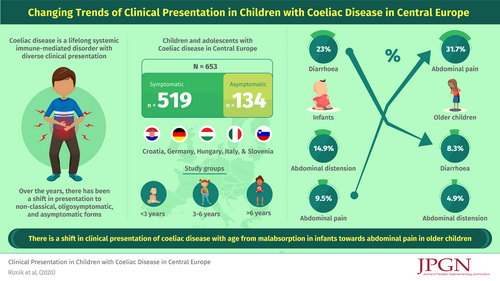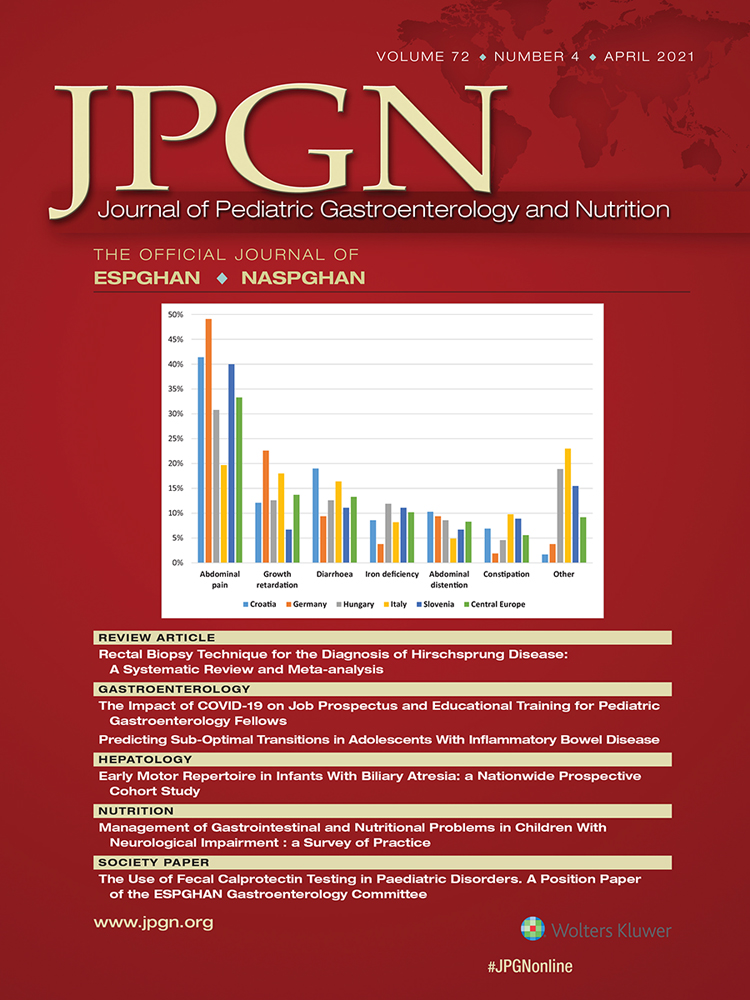Clinical Presentation in Children With Coeliac Disease in Central Europe
Supplemental digital content is available for this article. Direct URL citations appear in the printed text, and links to the digital files are provided in the HTML text of this article on the journal's Web site (www.jpgn.org).
The study was supported by the Interreg Central Europe CE 111 Focus in CD project. The collection of Hungarian data was also supported by the NKFI120392 and EFOP-3.6.1-16-2016-00022 grants, the collection of German data by Medical Faculty, Ludwig Maximilian University Munich and Bavarian State Ministry for Education, Culture, Science and Arts, and the collection of Slovenian data by Slovenian Research Agency (ARRS).
The authors report no conflicts of interest.
An infographic is available for this article at:http://links.lww.com/MPG/C104.
ABSTRACT
Objectives:
During the past decades, there has been a shift in the clinical presentation of coeliac disease (CD) to nonclassical, oligosymptomatic, and asymptomatic forms. We assessed clinical presentation of CD in children and adolescents in Central Europe.
Methods:
Paediatric gastroenterologists in 5 countries retrospectively reported data of their patients diagnosed with CD. Clinical presentation was analyzed and the differences among very young (<3 years) and older children and adolescents were studied.
Results:
Data from 653 children and adolescents (median age 7 years 2 months; 63.9% girls) from Croatia, Germany, Hungary, Italy, and Slovenia were available for the analysis. One fifth (N = 134) of all children were asymptomatic. In symptomatic children, the most common leading symptom was abdominal pain (33.3%), followed by growth retardation (13.7%) and diarrhoea (13.3%). The majority of symptomatic children (47.6%; N = 247) were polysymptomatic. Abdominal pain was the most common symptom in polysymptomatic (66.4%) as well as in monosymptomatic children (29.7%). Comparing clinical presentation of CD in very young children (younger than 3 years) with older children (3 years or older), we found that symptoms and signs of malabsorption were significantly more common in younger (P < 0.001), whereas abdominal pain and asymptomatic presentation were more common in older children and adolescents (both P < 0.001).
Conclusion:
In children with CD, abdominal pain has become the most common symptom. However, in younger children, symptoms of malabsorption are still seen frequently. This raises a question about the underlying mechanism of observed change in clinical presentation in favour of nonclassical presentation and asymptomatic disease at certain age.





